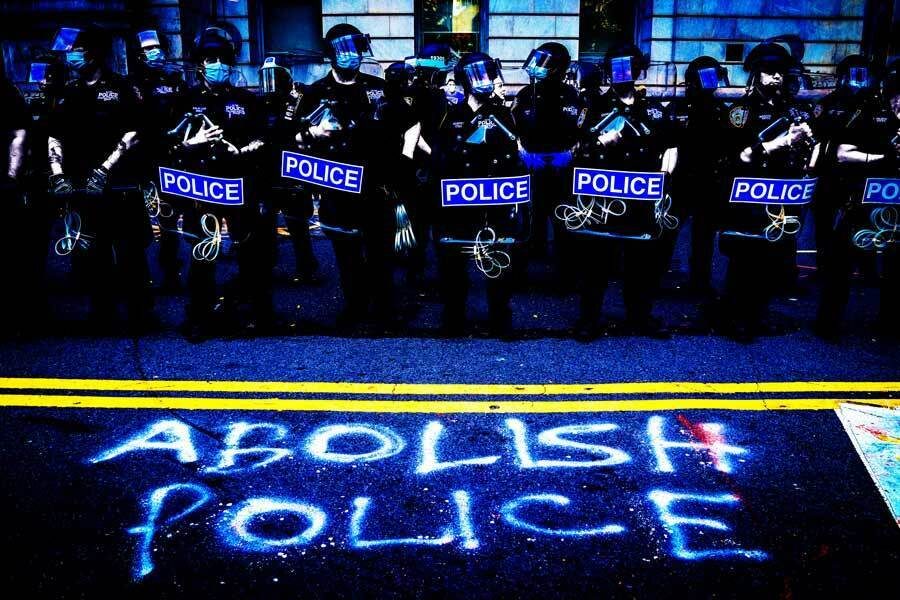Community Control Won’t Fix What’s Wrong with Cops
There’s no reforming an inherently violent, white supremacist system. We must abolish the police.
Carl Williams and Christian Williams

This article is a response to “To Transform Policing, We Need Community Control” by Jazmine Salas.
The United States has built a system of military-style, white supremacist policing for nearly 200 years. Since it began, this police system has served as the country’s primary engine to uphold white supremacy by destroying the lives of Black people — via the death penalty, life without parole, three strikes laws, felon disenfranchisement, cash bail, the war on drugs and, perhaps most dramatically, police impunity. “Instead of war on poverty they got a war on drugs,” Tupac Shakur said, “so the police can bother me.”
Some still think we can fine-tune our police system in just the right way to make it not racist. We believe this is merely “tinker[ing] with the machinery of death,” as Supreme Court Justice Harry Blackmun deemed efforts to reform capital punishment. The oppressive impact of policing is not a “mistake” and the system isn’t “broken”; the system is working as intended. Centuries of attempts to “correct” or “reform” paramilitary policing have not changed the fact that racism is at its core.
Therefore, we call for police abolition. In toto.
Any policy that does not directly move us toward abolition should be viewed with suspicion, including proposals (popular even on the Left) for community control over police. Community control would not fundamentally transform the role of the police because we cannot reform the unreformable.
Reformists have long called for some civilian structure to police the police, whether an elected board (such as Jazmine suggests) or an appointed body with more limited powers. Either way, any such structure would add to policing budgets or police-adjacent budgets— the opposite of defunding.
While some argue a civilian board could choose to defund or abolish the police, the action is far from guaranteed. In fact, such a body would be dependent on (and demand) the existence of robust police structures, because a community control board needs something to control. Just in terms of simple self-preservation, such a board or committee would actually be resistant to abolition, rather than an ally against policing.
Jazmine argues a civilian accountability board could investigate complaints and discipline offending officers. Versions of review boards already exist across the country in such cities as Boston, New York, Berkeley, Calif., and Pittsburgh. In 2005, scholars at Northeastern University sketched out various forms of civilian review that have been implemented. While none of these forms featured elected boards, some included external civilian bodies empowered to conduct independent investigations — not so different from what Jazmine advocates. Independent review boards either lacked the resources to adequately pursue complaints or they demanded significant funding, which again seems at odds with the push to defund police infrastructure. What’s more, many police departments refused to cooperate in investigations. Nationwide, many civilian oversight bodies lack power, and there is no firm research showing they are effective in achieving less police violence, fewer complaints and more satisfied complainants.
The idea that the boards could (or would even have the ability to) effect real change is one of the main flaws in this reformist argumentation. Like many commonly proposed policy fixes (such as banning chokeholds and using body cameras), it is doomed to fail because it does not fundamentally change what policing is. And, of course, once board members become part of the state apparatus, they are no longer grassroots advocates (if they ever really were). The existence of the board only serves to give a veneer of legitimacy to police in the eyes of the public.
Past efforts to build such legitimacy show how futile these new efforts are. Many police departments have previously attempted to address issues of crime and disorder by building trust and relationships with community members, for example. It sounds like what we want: Officer Friendly walking a beat, chatting with neighbors and helping folks out. But that dynamic is idyllic and impossible to achieve from where we are.
In reality, community policing efforts can increase police presence, increase budgets and cultivate distrust among neighbors. They plaster over the violent harms of shootings, beatings and stop-and-frisks. Some abolitionist circles joke that community policing just means the cop beating your ass now knows your street name. Putting communities nominally in control of the police would have similar results.
In short, civilian control is just another cosmetic variation. It makes us feel as if we are making a thing better when, in fact, we are only making it look better. Ultimately, what we need is to defund the cops and disband them. We are in a revolutionary moment; we can do far better, and we will.
For a response to this article, read “Want to Abolish the Police? The First Step Is Putting Them Under Democratic Control” by Olúfẹ́mi O. Táíwò.





